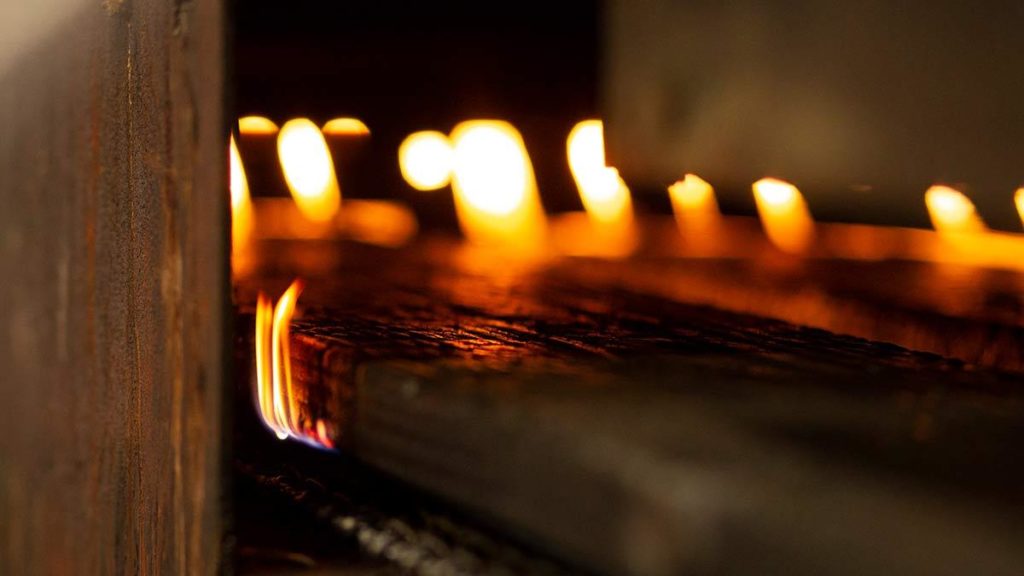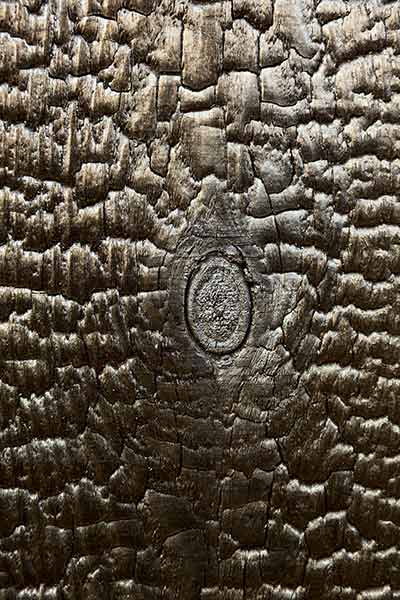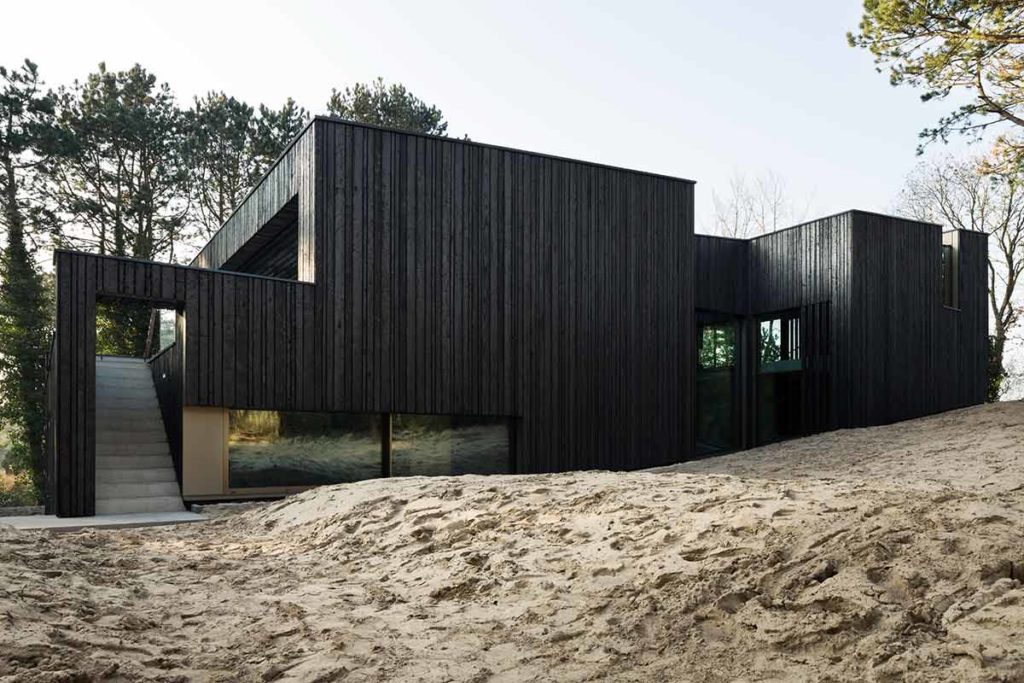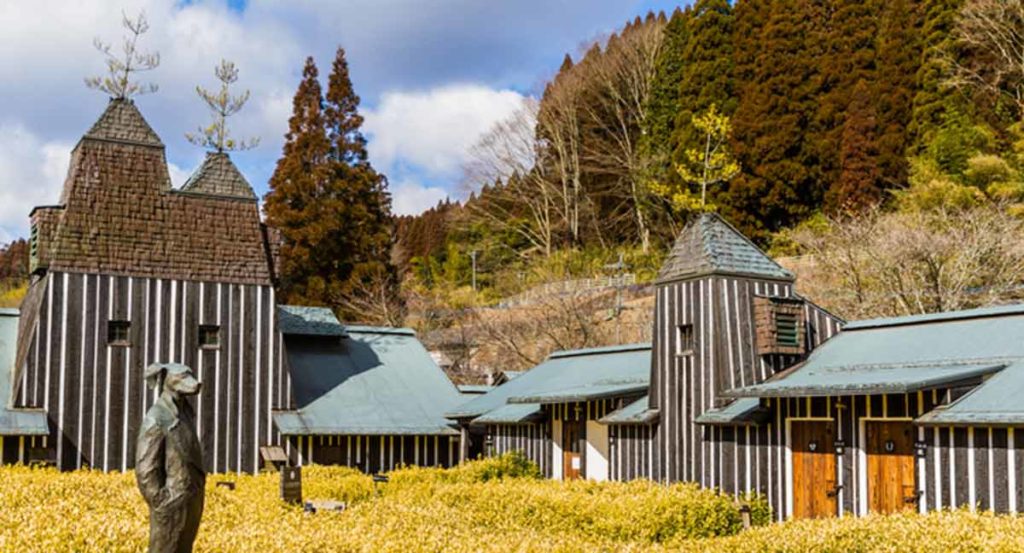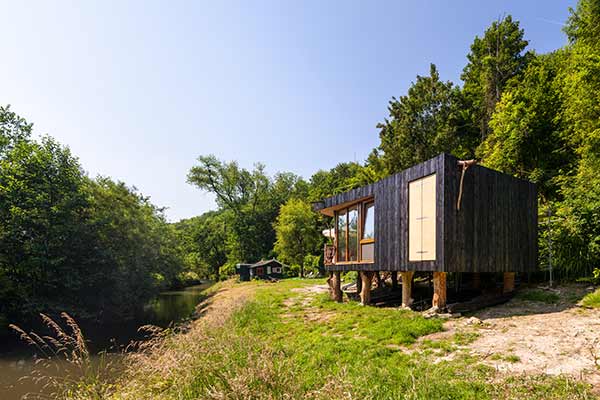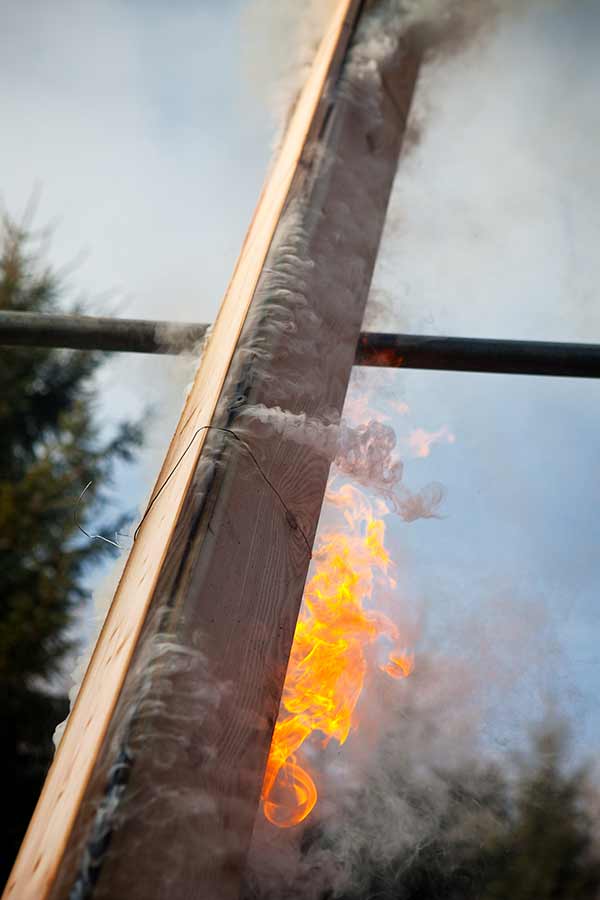Baptism of fire
Charred is the new black. An ancient Japanese technique for conserving wood is all the rage in contemporary architecture. As well as looking sophisticated, this building material scores top marks when it comes to sustainability.
Intentionally destroying material to make it more resistant sounds a little paradoxical. But this is exactly what is involved in the Japanese technique of shou sugi ban. The term translates literally as “burnt cedar board”: a wood surface is carbonized by carefully burning it and then sealing it with oil.
The discovery of beauty in the imperfect, the acceptance of the cycle of life and death.
Life philosophy of wabi-sabi
The imagery underlying shou sugi ban is deeply rooted in Japanese culture. Destruction generates strength and resilience. A notion that ties in with the Japanese life philosophy of wabi-sabi: “The discovery of beauty in the imperfect, the acceptance of the cycle of life and death.”
Once it has been treated with the shou sugi ban technique, the wood acquires a silvery-black sheen and its surface is more or less rutted depending on the degree of carbonization. A dramatic look that is becoming increasingly popular among architects and furniture makers based on the trend from Japan. Pure aesthetics aside, this ancient processing method, which goes back several millennia, also offers a number of tangible benefits.
Discovered by accident
“A long time ago, the Japanese discovered this technique purely by accident,” explains Pieter Weijnen. He founded the Zwarthout workshop in the Dutch town of Leersum and specializes in shou sugi ban. “They realized that wooden structures that were damaged by fire, but not completely destroyed, ended up being far more resistant to fire.”
They also found that the attractive black layer of carbon provided protection against water, insects and mould.
Pieter Weijnen, founder of Zwarthout
This in turn gave rise to shou sugi ban – or yakisugi, as the technique is still called in Japan. Even today, craftspeople continue to adhere to the traditional method. This involves tying three cypress boards together and charring the interior surfaces through the stack effect in the resulting tunnel. Pieter Weijnen: “They also found that the attractive black layer of carbon provided protection against water, insects and mould. Another advantage was that people no longer needed to paint their houses.”
Weijnen, a former architect, chanced upon the works of Japanese avant-gardist Terunobu Fujimori at the Venice Biennale back in 2006. An architect and visionary, Fujimori frequently uses shou sugi ban wood for his offbeat designs. The Dutch visitor was very taken with the beauty and durability of the black wood. One research trip to Japan and several experiments later, Weijnen built his own house with a shou sugi ban façade.
As he recalls: “I developed my own furnace and found an efficient production process that allowed the quality of the wood to be retained.” These days, his company supplies architects, designers and property developers with wood for a wide cross-section of projects. Designs range from black built-in kitchens and fire-proof fire stations to luxurious seafront residences.
Sustainable material
Modern design often opts for inorganic materials in order to counter the natural ageing processes of time. With shou sugi ban, the effect is wholly organic and very much in keeping with the general shift towards sustainability in architecture.
The carbonization gives rise to a highly durable material that is produced in accordance with the cradle-to-cradle principle.
Pieter Weijnen, founder of Zwarthout
“The carbonization gives rise to a highly durable material that is produced in accordance with the cradle-to-cradle principle,” says Weijnen. C2C means that a product can be returned to the biological cycle as an organic nutrient. In other words, a low-tech product of the highest quality. In the Dutch workshop, care is taken to ensure a positive CO2 balance – for every tree that is used in production, a new one is planted.
Unlike conventional sealants, shou sugi ban embraces the elements rather than fighting against them – after all, they allow the wood to age gracefully. Exposure to harsh weather over the years creates a crackle glaze, which, as well as being easy on the eye, “tells its own story”.
80 to 100 years maintenance-free
Traditionally, the Japanese use their native cedar for this technique. Given the similar climatic conditions, European wood such as pine, larch or cedar are also suitable for this form of wood conservation. Experts estimate that it can take anything from between 80 and 100 years before charred wooden façades need to be sealed again with oil.
The sheer durability of shou sugi ban wood can be seen in Japan, where the Hōryū-ji Temple in the Nara prefecture has stood for a good 1,300 years. This is one of the oldest wooden buildings in the world and a listed UNESCO world heritage site.
Text: Gertraud Gerst
Translation: Rosemary Bridger-Lippe
Photos: Getty Images, Christian van der Kooy, IC4U, Zwarthout/FARO
